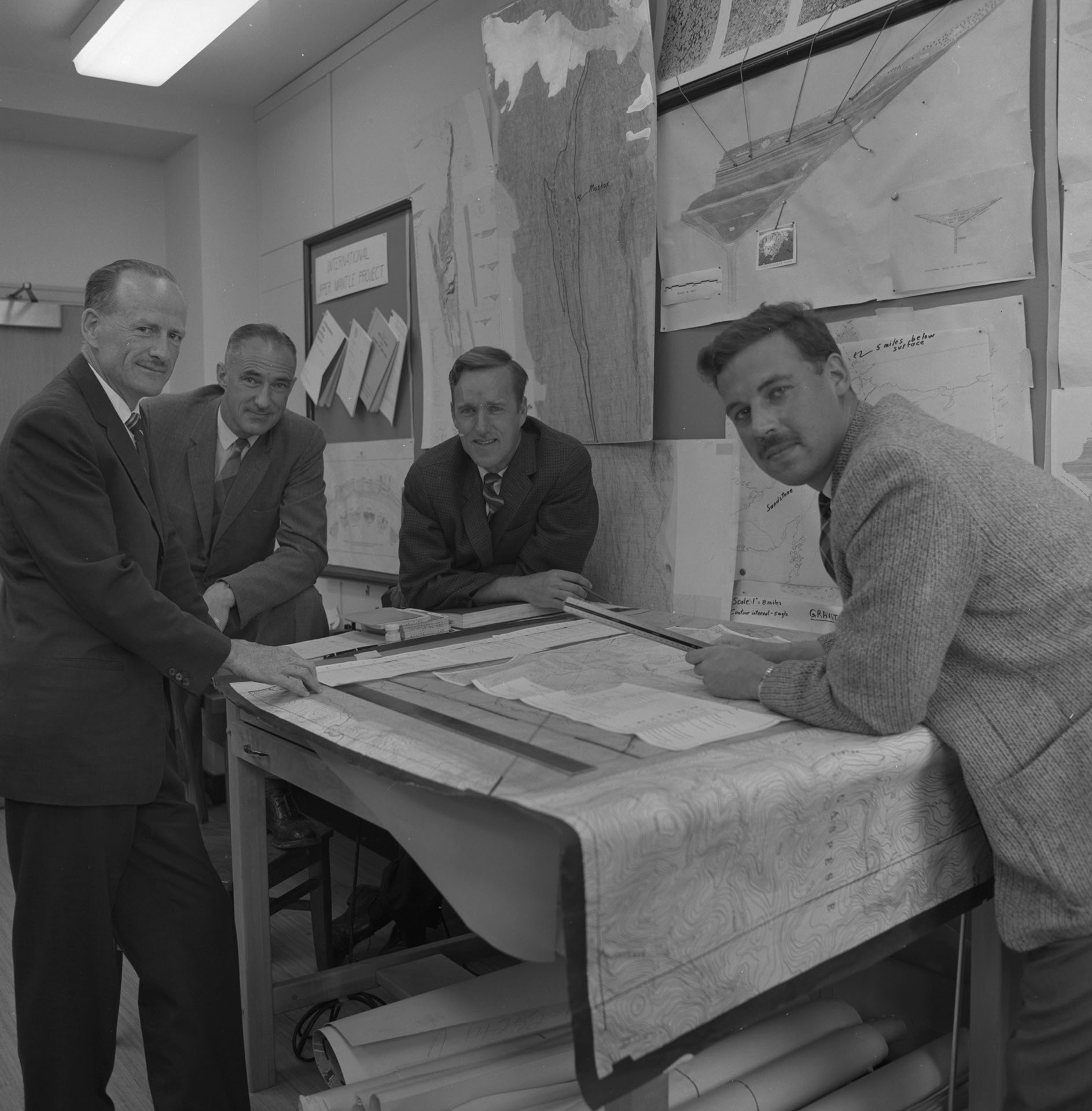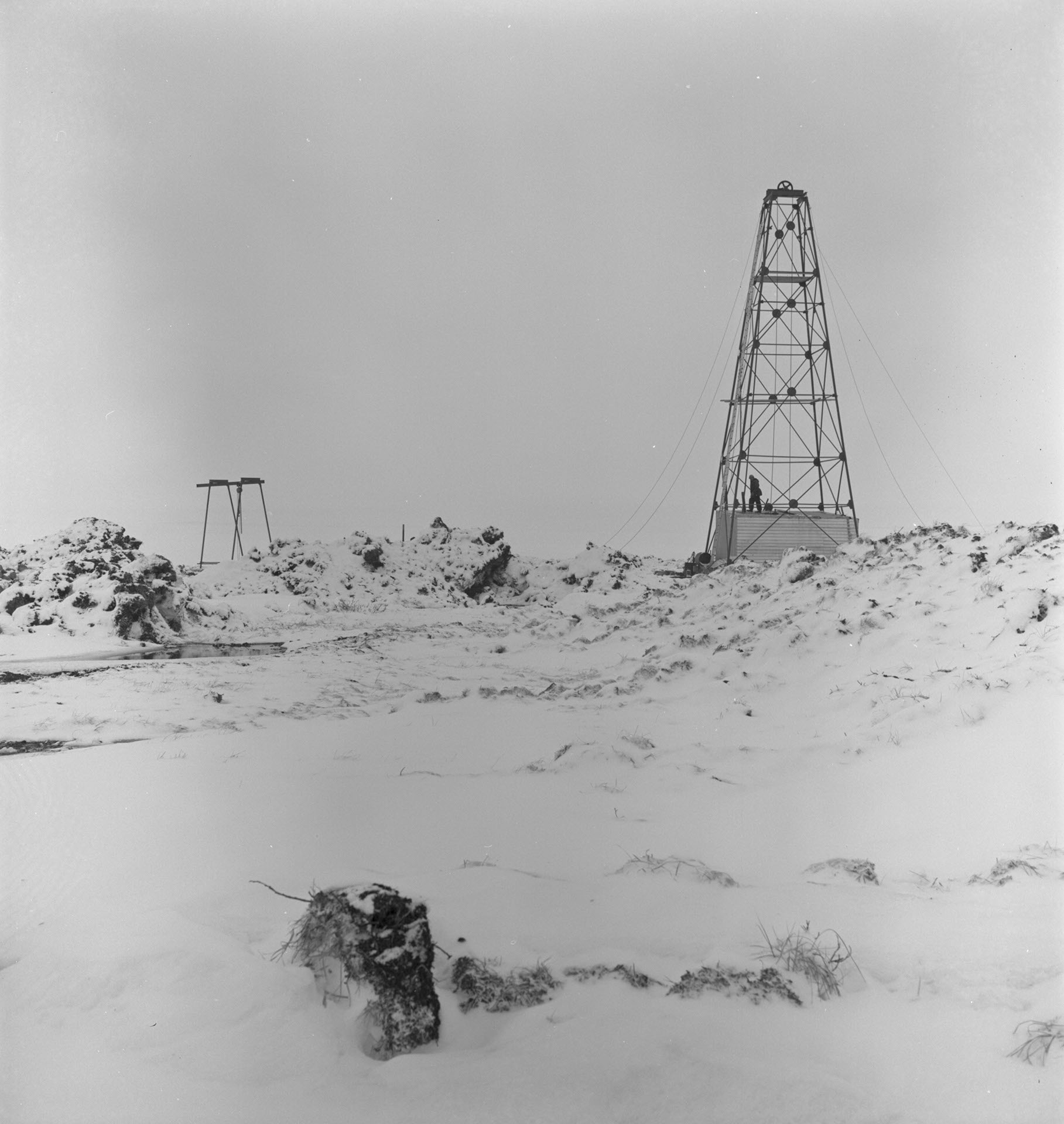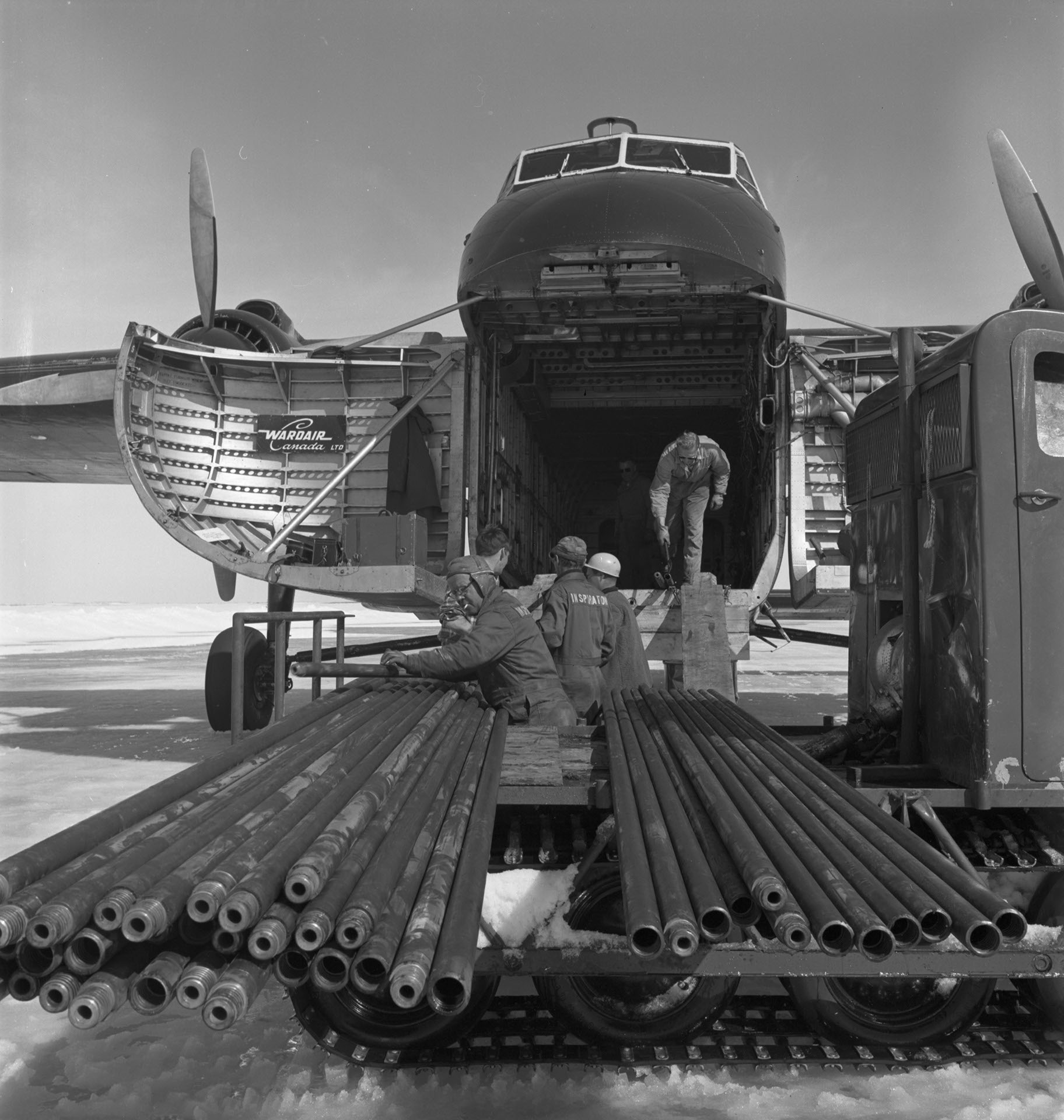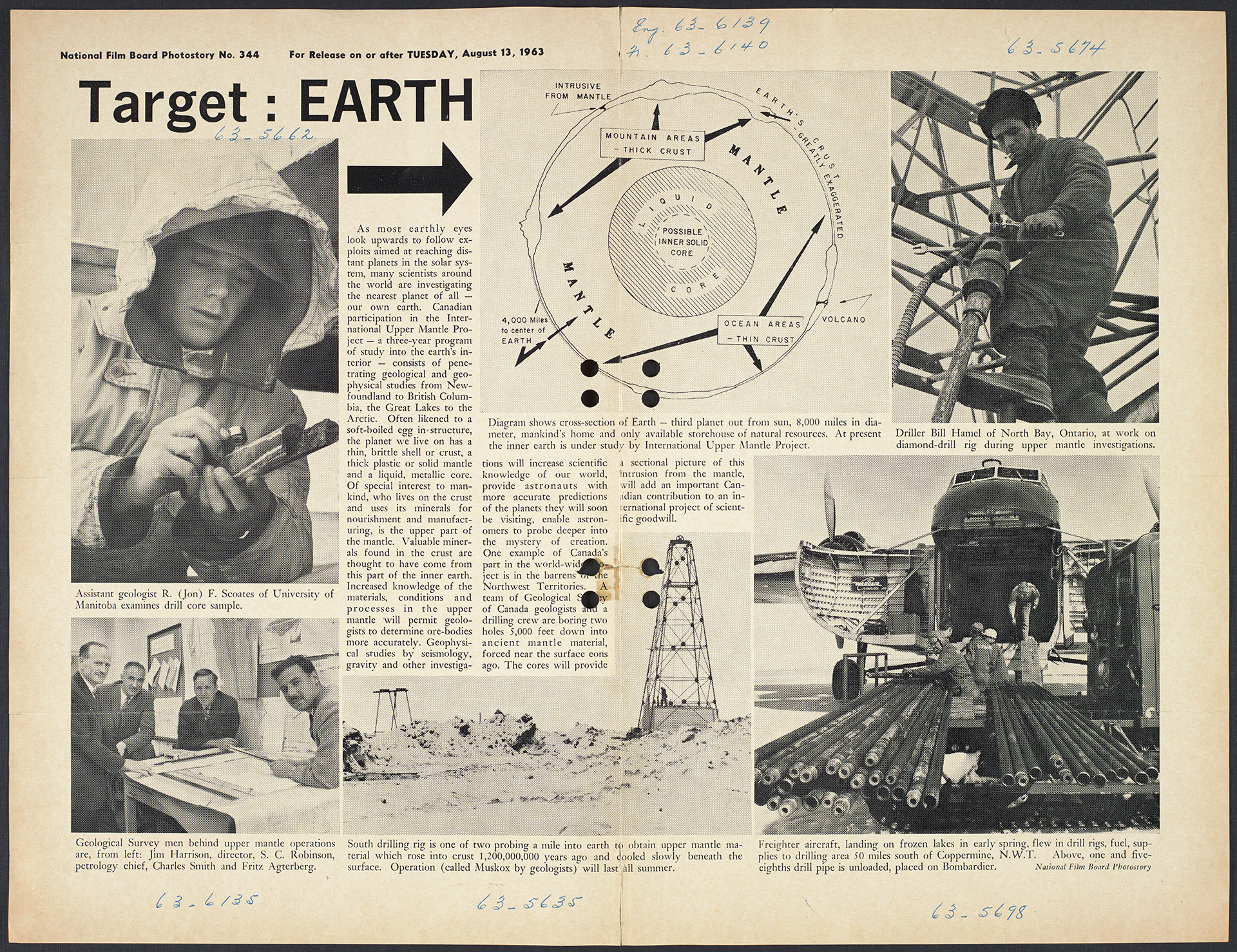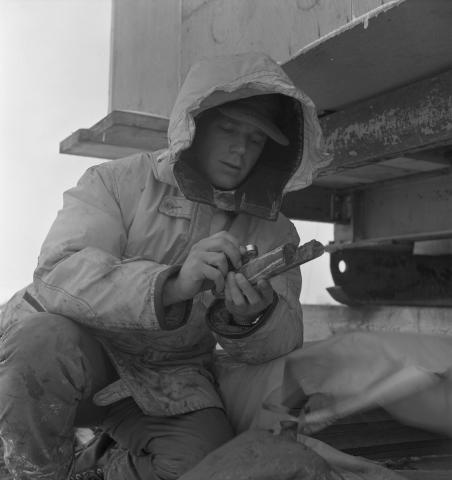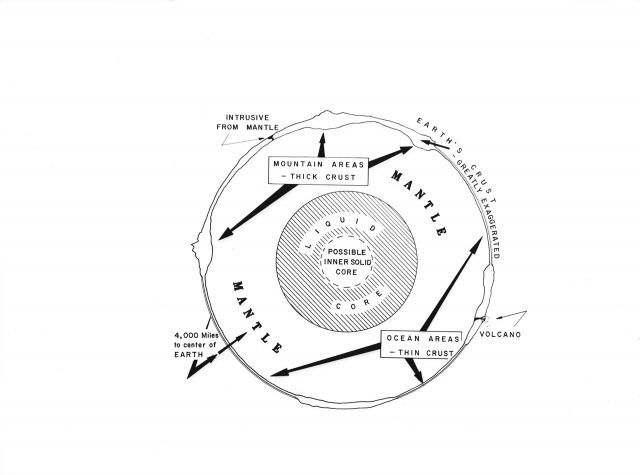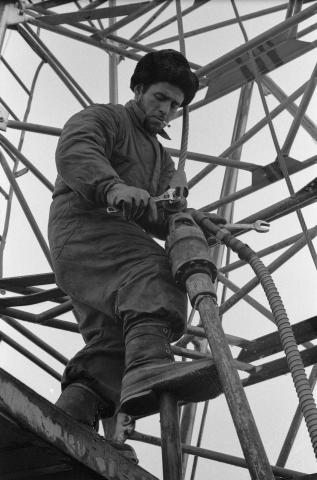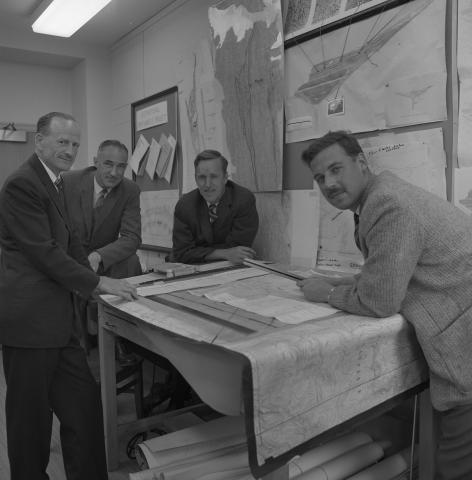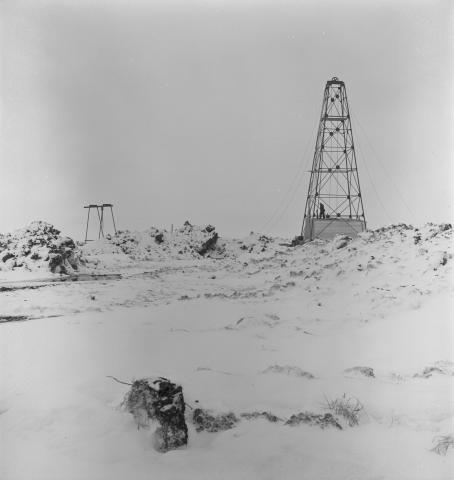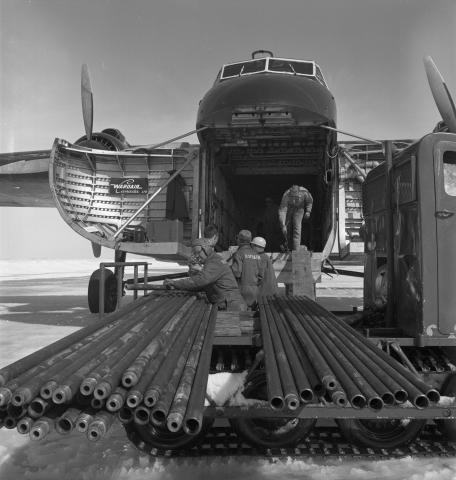
Photostory #344: Target: EARTH
Photographers
,
,
Maker
National Film Board of Canada
Release Date
August 13, 1963
Collection
CMCP fonds
Credit Line
Canadian Museum of Contemporary Photography fonds, National Gallery of Canada Library and Archives
Main Text
As most earthly eyes look upwards to follow exploits aimed at reaching distant planets in the solar system, many scientists around the world are investigating the nearest planet of all -- our own earth. Canadian participation in the International Upper Mantle Project -- a three-year program of study into the earth's interior -- consists of penetrating geological and geophysical studies from Newfoundland to British Columbia, the Great Lakes to the Arctic. Often likened to a soft-boiled egg in-structure, the planet we live on has a thin, brittle shell or crust, a thick plastic or solid mantle and a liquid, metallic core. Of special interest to mankind, who lives on the crust and uses its minerals for nourishment and manufacturing, is the upper part of the mantle. Valuable minerals found in the crust are thought to have come from this part of the inner earth. Increased knowledge of the materials, conditions and processes in the upper mantle will permit geologists to determine ore-bodies more accurately. Geophysical studies by seismology, gravity and other investigations will increase scientific knowledge of our world, provide astronauts with more accurate predictions of the planets they will soon be visiting, enable astronomers to probe deeper into the mystery of creation. One example of Canada's part in the world-wide project is in the barrens of the Northwest Territories. A team of Geological Survey of Canada geologists and a drilling crew are boring two holes 5,000 feet down into ancient mantle material, forced near the surface eons ago. The cores will provide a sectional picture of this intrusion from the mantle, will add an important Canadian contribution to an international project of scientific goodwill.
Subjects:



